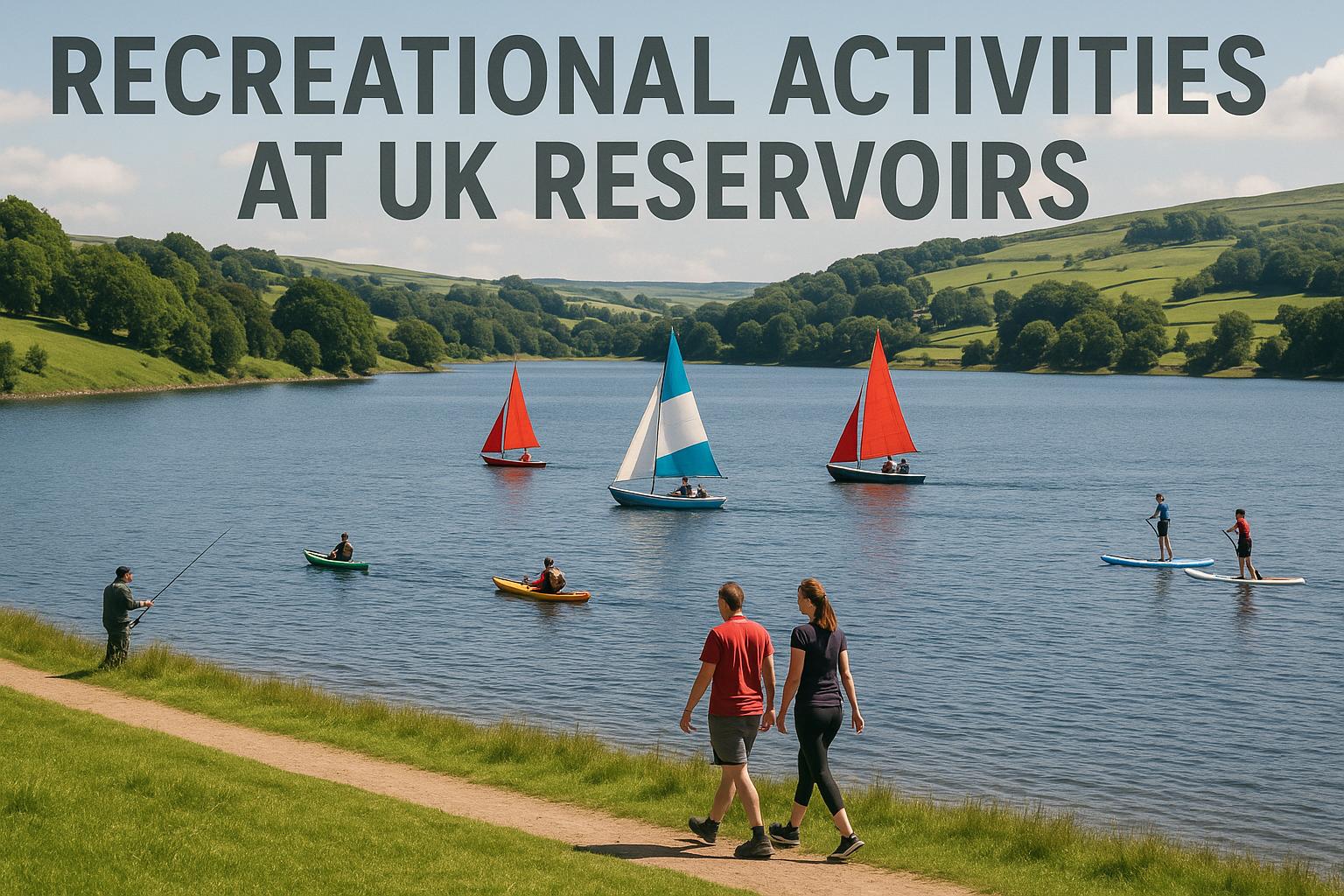Introduction
Reservoirs across the United Kingdom offer a wealth of recreational activities for visitors seeking outdoor experiences. While primarily serving as water supply sources, these reservoirs have been developed to accommodate various recreational pursuits without compromising their primary function. They provide a significant space where nature, leisure, and utility successfully converge, inviting people from varied walks of life to engage in and benefit from their facilities.
Water-Based Activities
Many reservoirs in the UK allow a range of water-based activities. Canoeing and kayaking are popular, with some reservoirs hosting events and training courses for enthusiasts of all skill levels. Visitors can often rent equipment on-site or bring their own. This accessibility makes these sports available to novices and seasoned practitioners alike, encouraging a wide-ranging appreciation for water sports in serene settings.
In addition, sailing clubs are a common sight at larger reservoirs. These clubs provide sailing opportunities for beginner and experienced sailors alike, offering both structured lessons and free sailing opportunities to members and visitors. Some popular reservoirs for sailing include Rutland Water in the East Midlands and Ullswater in the Lake District. These reservoirs offer vast stretches of water ideal for gliding over the surface and learning the nuances of sailing in a controlled natural environment.
For those interested in angling, numerous reservoirs are stocked with fish such as trout or carp. Fishing permits are usually required, and these can be obtained from local fishing clubs or directly at the reservoir’s visitor centre. Fishing not only provides an opportunity for relaxation and patience practice but also builds a deeper connection with the water bodies and the life they sustain. The efforts to keep these stocks healthy ensure that angling remains a viable and sustainable activity.
Land-Based Activities
Beyond water sports, UK reservoirs offer an array of land-based activities. Walking and hiking trails are abundant, often providing scenic views of the water and surrounding countryside. Some reservoirs, such as Ladybower in the Peak District, are renowned for their stunning vistas, with trails catering to a variety of skill levels, from leisurely strolls to more challenging hikes.
Cycling is another popular activity. Reservoirs typically feature well-maintained trails suitable for both casual cyclists and more experienced riders. Grafham Water in Cambridgeshire is an example, offering a scenic 10-mile track around the reservoir’s perimeter. This encourages both fitness enthusiasts and those seeking to explore the countryside at a leisurely pace to enjoy their time at the reservoir.
Birdwatching is a favorite pastime at several UK reservoirs, which are home to diverse bird species. These areas often include designated bird hides and information boards to enhance the birdwatching experience. This allows visitors to engage with the reservoir’s ecosystem, fostering a greater understanding of the avian inhabitants and their behaviors, enhancing both knowledge and appreciation of natural biodiversity.
Facilities and Safety
Many reservoirs have facilities to cater to visitors, including parking areas, picnic spots, and cafes. Toilets and visitor centres providing maps and information are usually available as well. These facilities ensure that a day out at the reservoir is comfortable and enjoyable for all visitors. It’s important to adhere to the safety guidelines set forth by each site, especially for water activities. Wearing life jackets and following posted rules help ensure a safe experience for all visitors, maintaining the fun and the security of all those who are part of the reservoir’s vibrant community.
Conservation and Respect
While enjoying recreational activities, it’s vital to respect the natural environment. Adhering to the “Leave No Trace” principles ensures these beautiful sites remain pristine for future visitors. This involves simple yet impactful actions such as properly disposing of waste, minimizing environmental impact by staying on designated pathways, and treating wildlife and their habitats with care.
Additionally, staying on designated paths prevents damage to local flora and fauna. These efforts help maintain the delicate balance of the ecosystem, ensuring that the natural qualities of these areas are preserved for would-be adventurers and nature lovers.
Find Out More
For more information on specific reservoirs and the activities available, it’s advisable to visit individual websites or contact local visitor centres. These resources provide up-to-date information regarding accessibility, available amenities, and specific activity guidelines. The website of Waterscape provides a comprehensive guide to outdoor activities in the UK. Utilizing such resources ensures that visitors have the most rewarding and informed experience possible.
In summary, UK reservoirs are not only critical for water supply but also serve as valuable recreational resources. They represent more than just engineering achievements; they are open doors to nature, physical activity, and relaxation. By exploring the array of activities available, visitors can enjoy the natural beauty and outdoor opportunities these sites offer while respecting their ecological significance. Each visit becomes not just a recreational outing but an investment in and celebration of the UK’s natural splendor.
